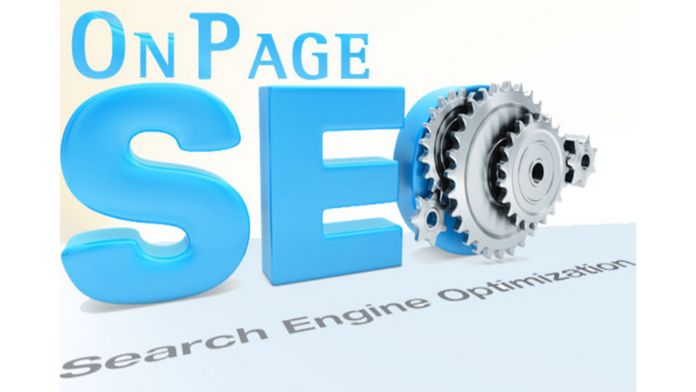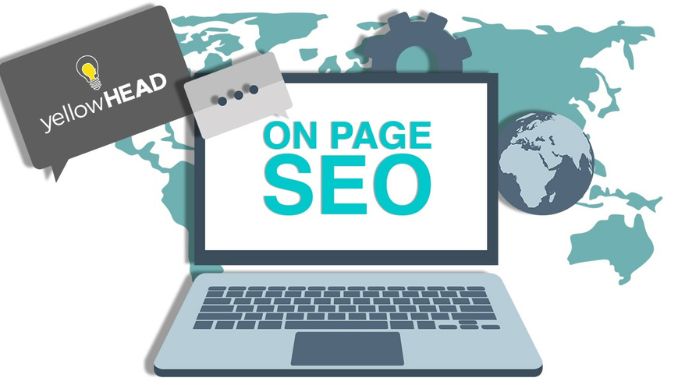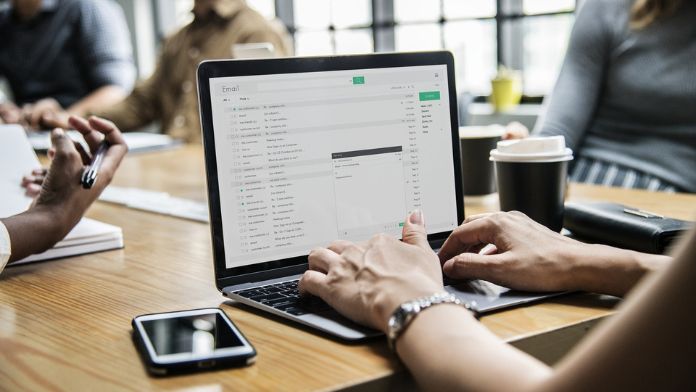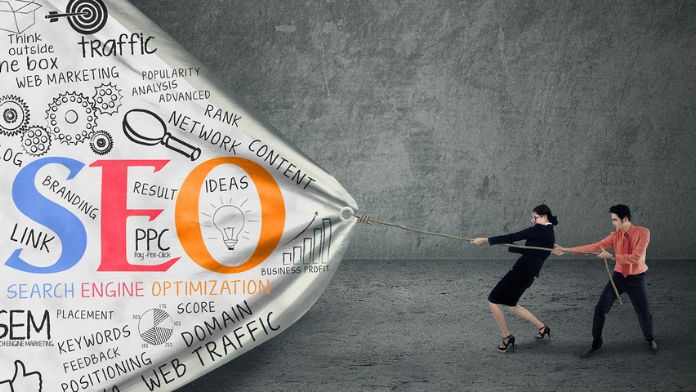In the modern digital era, increasing organic traffic to your blog requires search engine optimization. The process of improving individual web pages, or on-page SEO, such as “On-Page SEO for blogs: Increasing organic traffic,” is essential to reaching this objective. On-page SEO is built on keyword research. Choose high-traffic, relevant keywords and use them wisely in the titles, headers, and content of your pages.
Users should be enticed to click through via intriguing and succinct meta descriptions. Indexation and navigation are enhanced by logical site structure and user-friendly URLs.
High-quality content is important; in-depth, informative articles often rank better. Multimedia and images need to be optimized for quicker loading times.
Links, both internal and external, enhance search engine ranking and user experience.
Finally, the mobile-friendliness of your blog is guaranteed by responsive design. By using these on-page SEO strategies consistently, you may raise your blog’s position in search results, which will eventually result in more organic traffic and higher online exposure.
On-Page SEO

Search Engine Optimization, or “on-page SEO,” is a crucial part of website optimization and digital marketing. Its main goal is to improve certain web pages’ visibility and search engine rankings, both of which will ultimately result in a rise in organic traffic.
Essentials for On-Page SEO include:
Keyword research is the process of identifying relevant phrases that people in your target market are probably going to search for.
High-quality content:
creating intelligent, well-structured, and captivating content that is focused on the keywords you have chosen.
Use title tags to create captivating headlines that are packed with keywords on every page. I am composing brief, informative blurbs for meta descriptions to encourage click-throughs.
Header Tags:
To arrange your content, use the H1, H2, and H3 headers. sensible keyword placement in headers, meta tags, and text Image optimization is the process of giving photos descriptive alt text.
Establishing a logical internal connection system is known as internal linking. They help to improve the user experience on mobile devices by ensuring that the website loads quickly and works as intended.
In order to enhance search results, schema markup will be used to provide structured data. You may increase the possibility that your website will rank highly in search engine results, attract more visitors, and assist you in achieving your online goals by using these on-page SEO tactics.
What Is On-Page SEO

Enhancing a single web page’s content, such as ‘On-Page SEO for blogs: Increasing organic traffic,’ to make it more visible in search results and raise its organic rating is known as on-page SEO. Best SEO blogs involve using a range of strategies and techniques that are applied straight to a webpage’s content and HTML source code.
Internal linking, arranging URLs, producing high-quality content, optimizing graphics, and optimizing keywords, meta tags, and headers are a few examples of these tactics.
On-page SEO aims to improve search engine optimization by providing signals to search engines regarding the relevance and user value of a page, and following best practices for on-page SEO may assist websites in achieving a better search engine ranking, which will ultimately increase organic traffic and improve user experience.
The Importance Of Keywords
Keywords are the foundation of efficient online communication. They serve as navigational markers for search engines, pointing users to the most relevant content. Keywords in SEO help websites become more visible; this enhances their search engine ranking. And attract certain kinds of visitors.
Keywords are also useful in terms of user experience and content organization. By making the topic and goal of a website obvious, they facilitate users’ ability to find what they need on a webpage. By utilizing the right keywords, you may enhance click-through rates and minimize bounce rates.
Employing keywords also enables businesses to understand customer intent and preferences, which helps in the creation of successful marketing campaigns and content. It is impossible to overstate the importance of keywords in the digital era; they are necessary for establishing a successful online presence and engaging with the right audience.
Crafting Engaging Headlines

The secret to drawing readers into your material is to develop attention-grabbing headlines. A great headline, such as “On-Page SEO for blogs: Increasing organic traffic,” should be interesting, informative, and concise while also piquing readers’ interest and providing value. Use strong action verbs and adjectives to convey a feeling of excitement or urgency.
To make the content simpler to scan, use numbers to indicate lists or steps. Pose thought-provoking questions that entice readers to read your piece in order to get the answers. Make sure your headlines speak to the needs and preferences of your intended readership.
Try different combinations to increase click-through rates. Ultimately, a compelling headline acts as the doorway to your writing, luring readers in and setting the stage for a positive experience.
Content Optimization
Material optimization is a systematic procedure aimed at improving the way digital material performs on search engines and increases reader engagement. Researching keywords, ensuring that the content is relevant, and structuring the text for readability are all part of this process.
Google blogger seo optimizes headers, images, and meta tags based on mobile friendliness and page speed. Delivering valuable, approachable material while adhering to SEO best practices is the goal.
Through an increase in organic traffic, optimized content improves conversion rates and audience engagement. By updating and improving content often in response to changing search engines, you can remain competitive and authoritative in your industry and accomplish your online goals.
Quality Content Matters
Effective communication is built on top-notch content. It engages, informs, and establishes a connection with your audience. In a digital age, when information is abundant, the content is distinguished from the noise by its substance, relevance, and value. On-Page SEO for blogs: Increasing organic traffic is a crucial element in ensuring your content’s discoverability and impact.
A well-written piece of content builds credibility in addition to providing information and entertainment. It communicates your expertise and commitment to excellence. Expansion, brand loyalty, and engagement are all facilitated through engaging content. It’s essential for effective social media, SEO, and branding strategies.
Your online presence is built on high-quality content, which extends to anything from insightful blog posts to captivating videos and in-depth articles. It inspires, enlightens, and leaves a lasting impression, proving that content is king in the realm of digital communication.
Proper Keyword Placement

In order to increase your content’s search exposure engines, the placement of your keywords is essential. In order to make effective use of keywords, observe these guidelines:
Use resources like Google Keyword Planner or SEMrush to begin your keyword research.
Title Tag:
Incorporate the primary keyword naturally into the title tag to provide readers and search engines with a clear understanding of the content’s subject.
Heading Tags: Use keywords in subheadings (H1, H2, H3, etc.) to help organize your content and make it simpler to scan.
Body Composition:
Use keywords sparingly and organically to keep the content understandable; do not fill the text with keywords. Include the phrase in the meta description to entice readers to click on your material when it appears in search results. Make use of a URL that is keyword-rich and puts the page’s content in context.
When it comes to photographs, alt text needs to be informative and, where applicable, include keywords.
Internal Links:
Use keywords in the anchor text of internal links to improve search engine rankings and content navigation.
User purpose:
Ensure that the content you provide answers the user’s questions and aligns with their search purpose.
Mobile Optimization:
Make your content mobile-friendly since it has an impact on search engine results.
Remember that the placement of keywords should be natural and should enhance the user experience rather than detract from seo blog topics. Creating informative, excellent content should always come first in order to complement your keyword approach.
Internal And External Links
Links on a website, both internal and external, are critical to user experience and SEO. Internal links allow users to navigate between pages on the same domain more easily and spread authority across the whole website. They improve SEO by helping search engines locate and index content more effectively.
Conversely, external links provide more information, credibility, and context by linking your website to other websites. Inbound links from reputable websites raise your site’s authority and search engine ranking.
Both types of links should be used strategically. Use internal links to organize your website’s content and external links to interact with other websites and quote reliable sources in order to establish a thorough and instructive online presence.
Technical Optimization
Technical optimization is the deliberate enhancement of a program, website, or system’s core functionality inside the digital technology environment. It consists of many essential elements:
Website speed:
Using content delivery networks, reducing unnecessary code, and optimizing images to ensure fast page loads.
The capacity to modify functionality and design to provide a smooth user experience across a variety of screens and devices is known as mobile responsiveness.
Crawlability is the process of making content readily accessible to search engines via sensible site design, XML sitemaps, and unambiguous URLs. Security: Defending against internet threats by putting in place measures like firewalls, SSL certificates, and regular updates.
Structured Data:
Using schema markup to enhance the content’s readability for search engines. We are improving server performance by speeding up and stabilizing hosting environments.
Technical optimization lays the groundwork for strong SEO, a satisfying user experience, and overall digital performance.
Mobile-Friendly Design
A mobile-friendly design is essential in today’s digital environment. How to optimize blog posts for seo guarantees that applications and websites can effortlessly adjust to various mobile devices, providing the optimal user experience. Key elements of mobile-friendly design include responsive layouts, which adjust content to suit different screen sizes, touchscreen-friendly navigation, and quick loading times to keep users engaged.
Large, understandable fonts and strategically placed interactive elements make touch interactions easy to utilize. Mobile-friendly designs prioritize important features and information and make them screen-friendly.
Following these recommendations may help companies flourish in the increasingly mobile-centric world by improving user satisfaction, reaching a wider audience, and ranking better in search results (as search engines favor mobile-friendly websites).
Page Loading Speed
Page loading speed is the length To make your content more visible in search results in a user’s browser. Increasing organic traffic to websites is crucial for user experience and search engine optimization. Faster loading speeds have two advantages: they may potentially boost search engine results and increase customer happiness.
One or more of the factors influencing how fast a website loads is server performance; other factors include file sizes and browser rendering. By reducing unnecessary code, optimizing images, and using content delivery networks (CDNs), loading rates may be significantly increased.
Mobile SEO is particularly crucial since more and more customers are visiting websites using mobile devices. Since page loading speed has a direct impact on bounce and conversion rates, it is an essential element of online performance and success.
Image Optimization
Image optimization is essential for enhancing user experience and website speed. Compressing pictures may help websites load faster without compromising quality, which is important for retaining visitors and improving search engine rankings.
For mobile devices, in particular, choosing the correct image format (JPEG, PNG, or WebP) and scale is especially crucial to ensure fast loading times. Instructive alt text for photographs is essential for both SEO and accessibility.
This will improve your information’s visibility and accessibility. Finally, but just as importantly, using flexible design techniques ensures that images adapt to different screen sizes, greatly improving the user experience. Effective image optimization is a must for a website that is well-optimized.
Meta Tags And Descriptions
If you want to maximize the exposure of your website and draw in the correct type of visitors, meta tags and descriptions are essential. Use attention-grabbing descriptions and meta tags to improve SEO and draw users in. Utilize terms and expressions that are pertinent to your subject.
A well-written meta description should provide a concise synopsis of the content on your page in no more than 160 characters. Using meta tags, such as title and meta keywords, improves how well search engines comprehend your material.
As you improve the search engine ranking of your website, make sure that the tags and descriptions on each page are unique. To maintain your website competitively, user- and search-engine-friendly, update and enhance these elements often.
Meta Titles
Topic: “Unlocking the Power of CNC: Understanding What CNC Means in Manufacturing and Creative Industries”
Meta titles are crucial for search engine optimization (SEO) and for attracting readers to your content. Using relevant keywords like “CNC,” “manufacturing,” and “creative industries,” this title effectively sums up the content of your piece and may increase its visibility in search engine results. It also gives readers a greater sense of attraction when it comes to the promise of insight and knowledge.
Meta Descriptions
“CNC Machining: Explore the World of Precision.” Learn how computer numerical control (CNC) is revolutionizing industry and innovation. Discover the precision and efficiency of CNC technology, from intricate parts to amazing designs.
Leverage the industrial strength of CNC to let your imagination run wild. Learn more about the uses, software, and hardware of CNCs. Expand your understanding of this cutting-edge industry.
Numerous chances arise with CNC machining, regardless of your degree of experience. View our comprehensive explanation of CNC and its effects in many sectors. Join us as we bring the digital age to life via our creations. Unlock the possibilities of the CNC for your projects. Jump right into CNC machining!”
User Experience
The term “user experience” (UX) describes the general way in which a user engages with a product or service. A successful UX design puts the needs and preferences of the user first in order to provide simple, efficient, and enjoyable experiences.
Iterative design, user testing, and comprehensive research are necessary to ensure that the product or service lives up to user expectations. UX designers consider usability, accessibility, and aesthetic appeal in order to optimize user satisfaction.
Any digital product must have a strong user experience (UX) to be successful since it improves customer loyalty, reduces irritation, boosts engagement, and yields better outcomes.
Easy Navigation
The term “user experience” (UX) describes the general way in which a user engages with a product or service. Throughout the journey, the user’s emotions, perceptions, and enjoyment are taken into account. A successful UX design puts the needs and preferences of the user first in order to provide simple, efficient, and enjoyable experiences.
Iterative design, user testing, and comprehensive research are necessary to ensure that the product or service lives up to user expectations.
UX designers consider usability, accessibility, and aesthetic appeal in order to optimize user satisfaction. Any digital product must have a strong user experience (UX) to be successful since it improves customer loyalty, reduces irritation, boosts engagement, and yields better outcomes.
Reader-Friendly Formatting

The content is guaranteed to be aesthetically pleasing and easy to navigate via the use of a reader-friendly layout. On-Page SEO for blogs: Increasing organic traffic. It has concise paragraphs, lists with bullets, and distinct headings. This method improves learning and retention while maximizing reading by breaking the text up into manageable chunks.
White space and a straightforward style reduce cognitive load and enhance the reading experience overall. Links that direct readers to further resources are readily discernible and reachable.
Infographics, charts, and graphs are used to augment text in order to aid with understanding. Furthermore, enough line spacing and a readable font promote pleasant reading periods. To sum up, material offered in a book, website, or document may be easily accessed and enjoyed by the reader when it is formatted with their requirements in mind.
Promoting Your Blog
Gaining more readers and exposure for a blog requires effective blog promotion. You should first make sure your content is search engine optimized (SEO) in order to boost the amount of organic traffic. Build a rapport with your audience and use social media to advertise your content. Collaborate to endorse one other’s content as bloggers or industry influencers.
Email marketing is a powerful way to let your fans know about new content. You might get more visitors to your website by guest posting on popular websites.
In order to establish oneself as an authority on a topic, remember to participate in pertinent online forums and communities. You may make improvements to your marketing strategy by sticking to a regular publication schedule and keeping an eye on your blog’s performance.
Social Sharing
Effective blog advertising is necessary to grow a blog’s readership and visibility. To increase organic traffic, you should first improve your content for search engines (SEO), as explained in “On-Page SEO for blogs: Increasing organic traffic.” Establish a relationship with your audience and use social media to promote your work. Work together to promote each other’s material as bloggers or influencers in your industry.
Email marketing is a powerful way to let your fans know about new content. You might get more visitors to your website by guest posting on popular websites.
In order to establish oneself as an authority on a topic, remember to participate in pertinent online forums and communities. You may make improvements to your marketing strategy by sticking to a regular publication schedule and keeping an eye on your blog’s performance.
Email Marketing
Are you ready to boost the success of your business and the efficacy of your marketing initiatives? Please take a look at our expert email marketing services right now!
One of the best methods for engaging with consumers, boosting revenue, and forging long-lasting relationships is email marketing.
With our personalized campaigns, we’ll help you with content creation that is engaging, improve deliverability, and track results.
You and our group of experienced experts will collaborate to produce engaging, customized emails that engage readers and increase conversions.
Don’t let this opportunity to enhance your marketing go through your fingers. To start your path to success, get in contact with us straight now!
Conclusion
To sum up, understanding on-page SEO for blogs is essential to increasing organic traffic and improving the visibility of your material overall. Bloggers may make their content more accessible to humans and search engines by optimizing important components, including internal linking, meta tags, and keyword placement.
As a consequence, both search engines and users benefit from your content’s greater ranking and increased value.
A solid on-page SEO strategy continues to be a crucial component of online success even as the digital world changes. Increased organic traffic and better online impact will surely be the benefits for bloggers who put in the time and effort to implement these optimization strategies.
FAQ
How Long Does It Take To See Results From On-Page SEO Efforts?
It can take several weeks to several months to see noticeable results from on-page SEO. The timeline depends on various factors, including your niche, competition, and the quality of your SEO efforts.
Is On-Page SEO The Only Factor In Improving Organic Traffic?
No, on-page SEO is just one aspect of a comprehensive SEO strategy. Off-page SEO, technical SEO, and content marketing also play critical roles in increasing organic traffic.
What Is The Ideal Keyword Density For On-Page SEO?
There is no fixed ideal keyword density. Focus on natural and reader-friendly content while using keywords where they naturally fit. Please stay away from keyword stuffing since it might damage your SEO.
Should I Update Old Blog Posts For SEO, And If So, How Often?
Updating old blog posts is a good practice. It keeps your content fresh and relevant. Consider revisiting and updating posts at least once a year.
Can I Hire A Professional For On-Page SEO, Or Is It Something I Can Do Myself?
For on-page SEO, you may work with a specialist if you have the budget. However, many bloggers successfully handle on-page SEO themselves by following best practices and staying informed about industry changes.
Boost your blog’s organic traffic with effective on-page SEO strategies. Learn how to optimize your content for higher search engine rankings.



